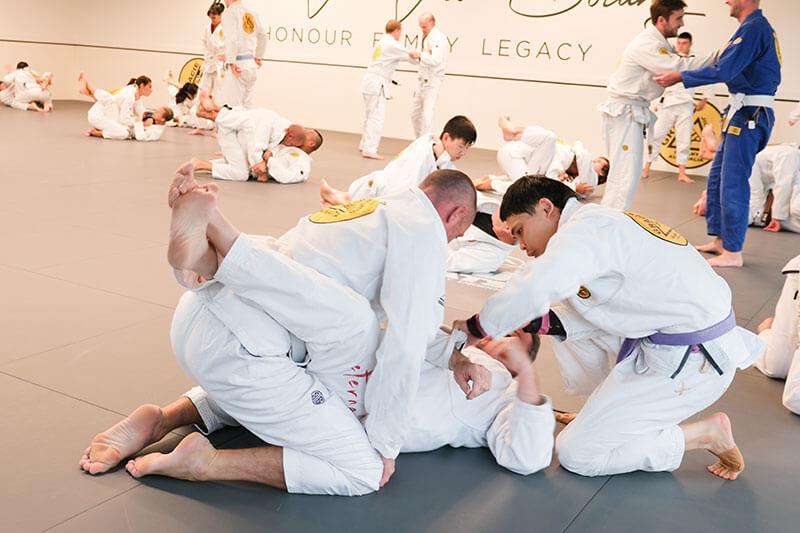Parents have a lot of options for keeping their kids active. Few options, however, allow parents and kids to share the same journey. Brazilian Jiu-Jitsu (BJJ) does: it’s self defence for the whole family.
Brazilian Jiu-Jitsu is regarded as arguably the best self-defense system out there. It’s also a fantastic way to get and stay in shape. What’s less appreciated about it, though, is that it’s an activity every member of the family can practice.
Jiu-Jitsu is popular among men for many reasons, not the least of which is its being the foundation of modern MMA. But it’s a martial art that’s excellent for women and children too. That’s because BJJ is about using technique to overcome size and strength differences.
We know that for a fact here at Gracie Botany, a BJJ academy located in Sydney’s eastern suburbs. Many parents sign up along with their kids, and go on their martial arts journey together. To make this as easy as possible, we offer classes for every age group: There’s kids classes divided between little and big kids, plus women-only classes too.

What is BJJ
If you’re just searching for an activity for the whole family, you may be unfamiliar with the basics of Brazilian Jiu-Jitsu. Let this be a brief primer.
When you think of martial arts, you may think of dojos filled with punching bags and kicking pads. Jiu-Jitsu is not that. There are no strikes in BJJ, it’s all about grappling and wrestling.
Unlike Judo and catch wrestling, which also eschew strikes in favor of grappling, BJJ predominantly takes place on the ground. Both Judo and wrestling matches end when one practitioner grounds their opponent. In Jiu-Jitsu, that’s where the match only begins.
In Jiu-Jitsu, you learn how to establish dominant positions, subdue and submit an opponent. That BJJ is largely ground based has significant implications for women and children.
Timing and leverage
BJJ’s central principle has from its genesis been that self defense should work for people of all sizes. More than any other martial art, Jiu-Jitsu allows a smaller person to use technique to overcome a larger person.
Naturally, this makes it ideal for kids to defend themselves against bullies, and for women to defend themselves against men.
It goes back to Jiu-Jitsu being ground-based. The part of the body most able to generate power are the legs. Consider how people squat more than they bench press. Any practical employment of strength, like moving a heavy object, relies on legs. By taking a larger opponent to the ground, this factor is less significant.
Of course, martial arts aren’t magic. Size and strength are still valuable assets in Jiu-Jitsu. The point is that a person sufficiently practiced in BJJ can overcome a less experienced, but much larger opponent.
A range of options
Jiu-Jitsu is designed to work for people of all sizes, but that’s not the only reason for its self-defence pre-eminence. Another key factor is the range of options the martial art offers practitioners.
As noted, Jiu-Jitsu teaches students how to escape from the grasp of an aggressor, establish dominant position on that aggressor and, if need be, apply a submission hold. These are three distinct skill sets to use in different scenarios.
Many other martial arts also teach skills applicable in the real world, but these often involve great force. A punch or kick to the head, as an example, can cause grievous harm. Sometimes this force is appropriate, other times it’s not. It may be more appropriate to subdue a bully than to incapacitate him, for instance. Unlike many other martial arts, Jiu-Jitsu gives practitioners the option of both.
If you’re in Sydney’s eastern suburbs and are interested in a martial art for the whole family, come into Gracie Botany for a free trial class.



